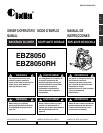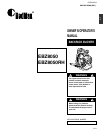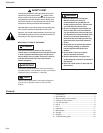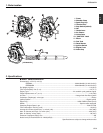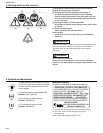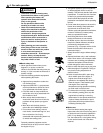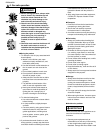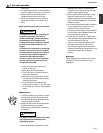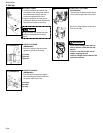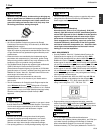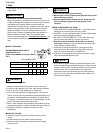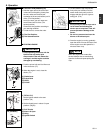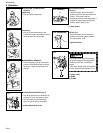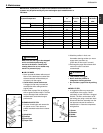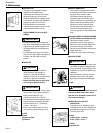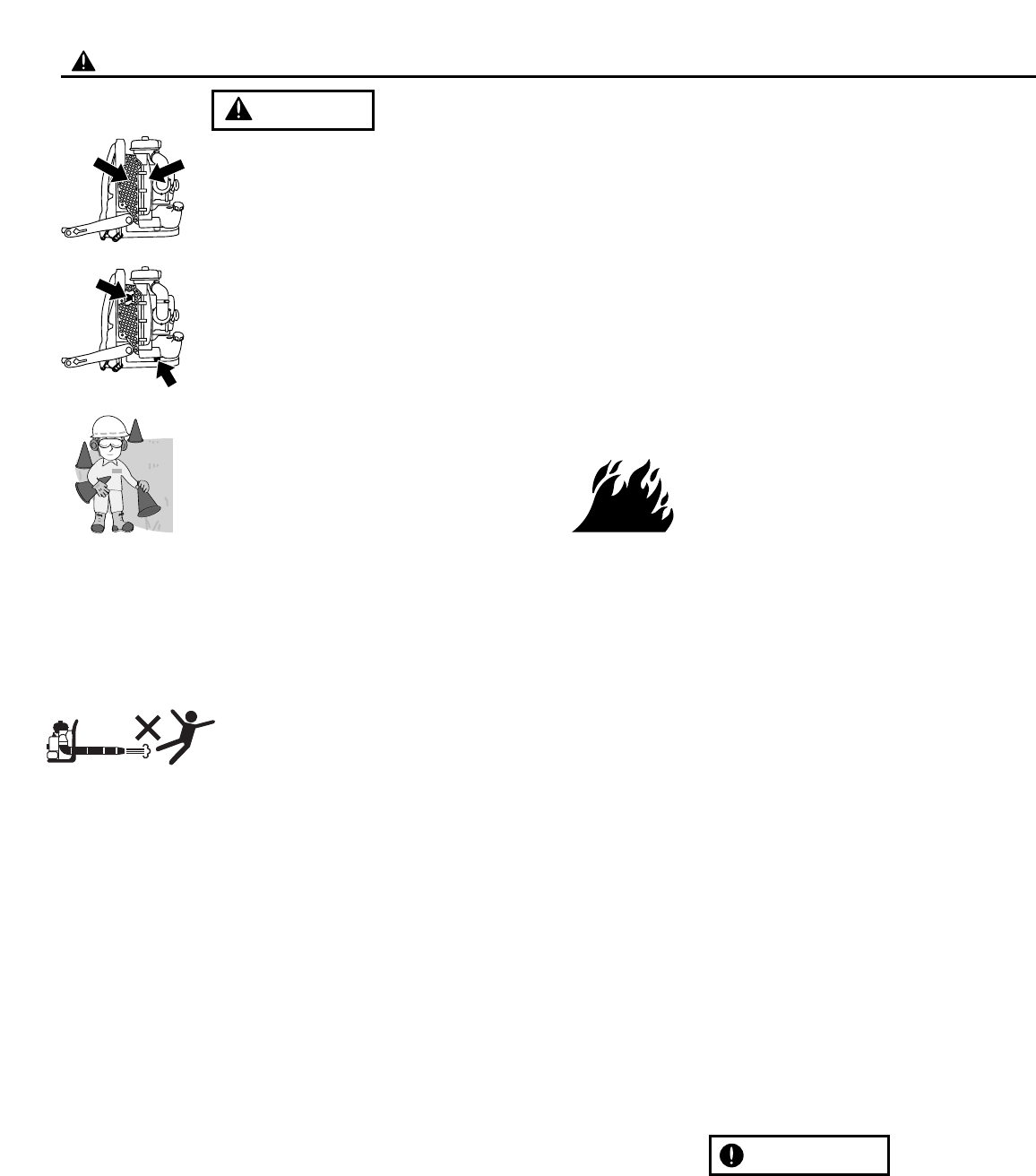
US-6
EBZ8050/RH
5. For safe operation
2. Before starting operation, always make
sure to check if any obstacles are left
inside the volute case and net. The
obstacles may cause damage on fan
and volute case and serious injury.
3. Check to see if the shock-absorbing
rubber mount has become cracked or
otherwise damaged. Note that failing to
replace this rubber mount when it has
become cracked or damaged may
cause the engine to come loose from its
frame during use, thus resulting in
possible serious bodily injury. If
cracked, be sure to replace without
delay.
4. Check the work area that the blower will
be used in and remove or cover all
valuables that may be damaged by the
air blast or thrown debris.
■ Using the product
1. To reduce the risk of injury associated with
thrown objects.
a: Watch out for children, pets, open
windows or freshly washed cars, and
blow debris safely away.
b: Use the full blower nozzle extension so
the air stream can work close to the
ground.
c: Do not allow bystaders in work area.
d: Do not point the blower tube in the
direction of people or pets.
e: Always check to be sure that no debris
has been blown onto someone else's
property.
f: Pay attention to the direction of the
wind, do not work against the wind.
g: Never point a blower tube toward an
open flame to avoid the possibility of
igniting the unit, causing injury to
yourself or damage to surroundings.
2. To minimize blowing time.
a: Use rakes and brooms to loosen debris
before blowing.
b: In dusty conditions, slightly dampen
surfaces.
c: Conserve water by using power blowers
instead of hoses for many lawn and
garden applications, including areas
such as gutters, screens, patios, grills,
porches and gardens.
3. If you detect abnormal vibration or noise
during operaion, promptly stop the blower
and check whether something has broken.
WARNING
If a breakdown has occurred, do not
operate the blower until the problem is
fixed.
4. After using blowers and other equipment,
CLEAN UP! Dispose of debris in trash
receptacles.
■ Transport
1. Drain the fuel from the fuel tank before
transporting or storing the blower.
2. Secure the unit carefully to prevent
movement when it is transported.
3. A unit that receives a strong shock during
transport and unloading may malfunction.
■ Fuel safety
1. Always use caution when handling fuel.
It is highly flammable. Wipe up all spills
and then move the blower at least 10 feet
(3 meters) from the fueling point before
starting the engine.
2. Eliminate all sources of sparks or flame
(i.e. smoking, open flames, or work that
can cause sparks) in the areas where fuel
is mixed, poured, or stored.
3. Do not smoke while handling fuel or while
operating the blower.
4. Do not refuel a hot engine.
5. Do not refuel a running engine.
6. Keep the handles dry, clean and free of oil
or fuel mixture.
7. Always store fuel in an approved container
designed for that purpose.
■ Storage
1. Always store the blower and fuel so that
there is no risk of leakages or fumes
coming into contact with sparks or naked
flames from electrical equipment, electric
moters, relays/switches, boilers and the
like.
2. For longer period of storage, the fuel tank
should be emptied.
3. When storing the blower, choose a space
indoors free from moisture and out of the
reach of children.
■ Avoid noise problem
Check and follow the local regulations as to
sound level and hours of operations
for blower.
1. Operate power equipment only at
reasonable hours not early in the morning
or late at night when people might be
disturbed. Comply with times listed in local
IMPORTANT



